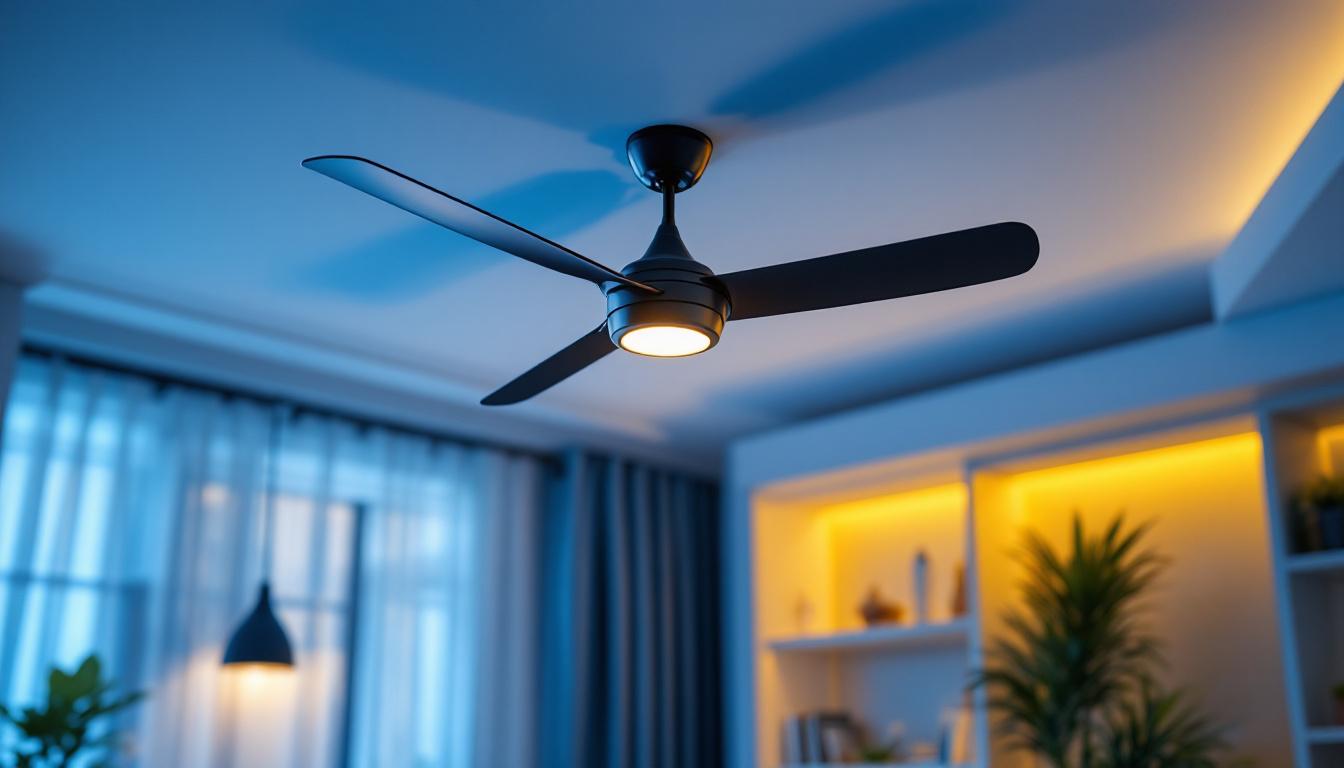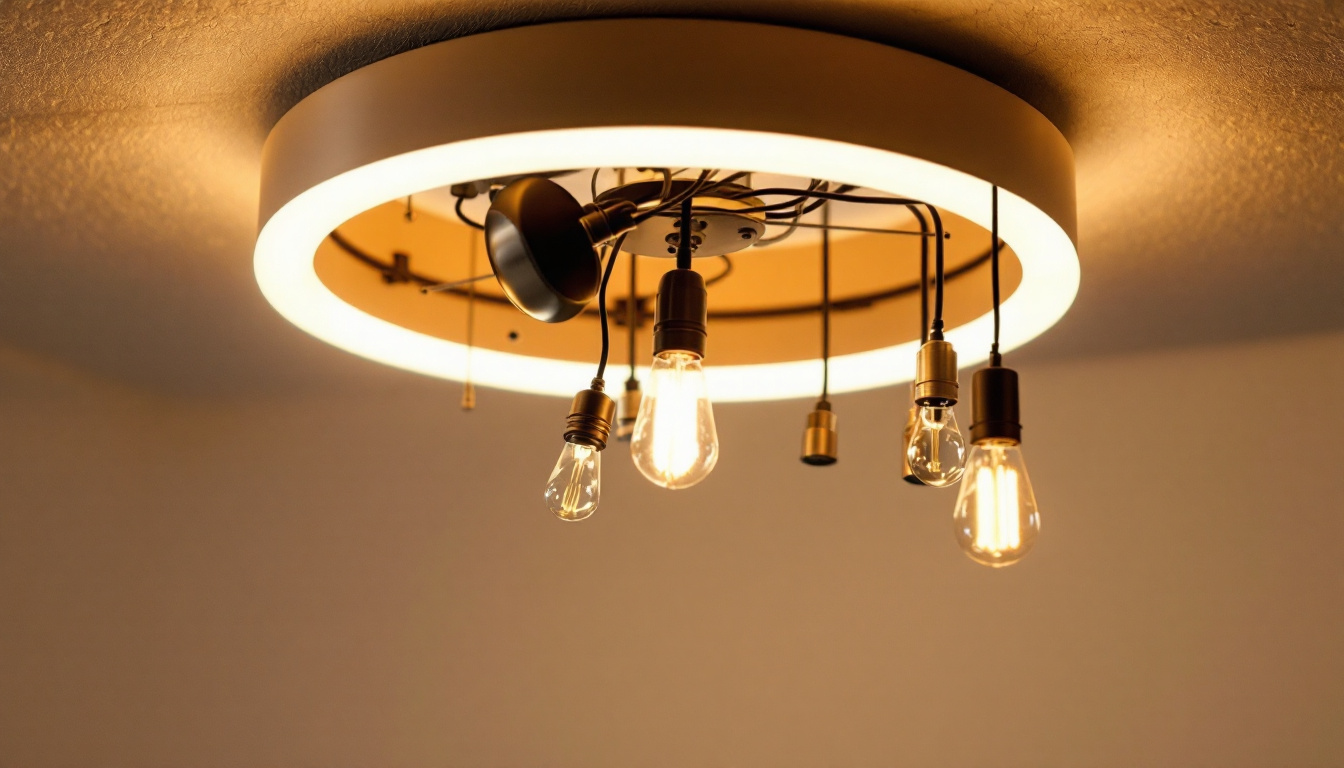
When it comes to garage lighting, the choice of fixtures can greatly influence both functionality and aesthetics. Flush mount garage lighting is a popular option due to its sleek design and ability to provide ample illumination without protruding into the space. However, improper planning and execution can lead to costly mistakes that affect the overall quality of the lighting project. This article aims to guide lighting contractors through the essential considerations to avoid common pitfalls associated with flush mount garage lighting.
Flush mount lighting fixtures are designed to sit directly against the ceiling, making them an ideal choice for garages where space may be limited. These fixtures come in various styles, sizes, and brightness levels, allowing for flexibility in design and functionality. Understanding the characteristics of flush mount lighting is crucial for selecting the right fixtures for any garage project.
One of the primary advantages of flush mount lighting is its unobtrusive design. This feature is particularly beneficial in garages where overhead clearance is a concern. Additionally, flush mount fixtures can distribute light evenly across the space, reducing shadows and enhancing visibility.
Moreover, these fixtures are often easier to install than other types of lighting, such as pendant or chandelier fixtures. This simplicity can save time and labor costs, making them an attractive option for contractors looking to streamline their projects. Furthermore, flush mount lights can be equipped with dimming capabilities, allowing users to adjust the brightness according to their needs, whether they are working on a project or simply storing items in the garage.
Flush mount fixtures come in various designs, including traditional, modern, and industrial styles. Each type can complement different garage aesthetics. For instance, a sleek, modern flush mount can enhance a contemporary garage, while a more ornate fixture may suit a vintage-style space.
Additionally, some flush mount fixtures feature integrated LED technology, providing energy efficiency and longevity. Understanding the different types available can help contractors recommend the best options to their clients. Beyond aesthetics, it’s also worth considering the color temperature of the bulbs used in these fixtures. Warmer tones can create a cozy atmosphere, while cooler tones are often preferred for tasks that require high visibility, such as working on cars or DIY projects. This attention to detail can significantly impact the functionality of the garage space.
Another important aspect to consider is the material and finish of the flush mount fixtures. Options range from metal and glass to plastic, each offering unique benefits in terms of durability and maintenance. For example, metal fixtures may provide a more industrial look and can withstand the wear and tear of a busy garage environment, while glass fixtures can add a touch of elegance and are often easier to clean. By carefully selecting the right materials, homeowners can ensure that their lighting not only looks great but also stands up to the rigors of garage use.
While flush mount garage lighting can be an excellent choice, several common mistakes can lead to unsatisfactory results. Awareness of these pitfalls can help contractors deliver high-quality lighting solutions that meet client expectations.
One of the most significant mistakes is failing to assess the lighting needs of the garage adequately. Garages often serve multiple functions, from vehicle storage to workshops. As such, the lighting requirements can vary significantly based on how the space will be used.
To avoid this mistake, contractors should conduct a thorough assessment of the garage’s dimensions and intended use. A general rule of thumb is to aim for a minimum of 50 lumens per square foot for general garage lighting. However, specific tasks may require additional illumination, necessitating the installation of multiple fixtures or supplementary task lighting. For instance, if the garage is used for intricate tasks like woodworking or mechanical repairs, brighter lighting may be necessary to ensure precision and safety. Incorporating dimmable options can also provide versatility, allowing users to adjust the brightness according to their current activities.
Another common error is neglecting to plan the placement of flush mount fixtures properly. Poor placement can lead to uneven lighting, creating dark spots or overly bright areas that can be distracting and unsafe.
To ensure optimal lighting distribution, contractors should consider the layout of the garage, including any obstructions like beams or shelves. A well-thought-out lighting plan will help achieve an even spread of light, enhancing both functionality and safety. Additionally, the height at which fixtures are installed can significantly impact light distribution; for example, fixtures installed too high may not provide adequate illumination for work areas. To further enhance the effectiveness of the lighting, contractors might also explore the use of reflective surfaces, such as light-colored walls or ceilings, which can help bounce light around the space, maximizing visibility.
In today’s environmentally-conscious market, energy efficiency is a critical consideration. Many contractors may overlook this aspect in favor of aesthetics or immediate cost savings. However, selecting energy-efficient fixtures can lead to long-term savings for clients and a reduced environmental impact.
LED flush mount fixtures are an excellent choice for energy efficiency, consuming significantly less power than traditional incandescent bulbs. Additionally, they have a longer lifespan, reducing the need for frequent replacements. Contractors should prioritize energy-efficient options to provide clients with sustainable solutions. Moreover, integrating smart lighting technology can further enhance energy savings; features such as motion sensors or timers can ensure that lights are only on when needed, minimizing unnecessary energy consumption. This not only benefits the environment but also aligns with the growing trend of smart home integration, appealing to a broader range of clients looking for modern and efficient solutions.
Design plays a vital role in the effectiveness of flush mount garage lighting. A well-considered design can enhance the overall appeal of the garage while ensuring adequate illumination.
When selecting flush mount fixtures, it’s essential to consider the overall style of the garage. A cohesive design will create a more inviting atmosphere. For example, a modern garage may benefit from sleek, minimalist fixtures, while a rustic garage might be better suited to fixtures with vintage or industrial designs.
Contractors should also consider the finish of the fixtures. Options such as brushed nickel, oil-rubbed bronze, or matte black can significantly impact the visual appeal and should align with the client’s preferences.
The color temperature of the lighting can also affect the ambiance of the garage. Warmer tones (around 2700K to 3000K) create a cozy atmosphere, while cooler tones (4000K to 5000K) can enhance visibility and create a more energetic environment.
Contractors should discuss color temperature options with clients to ensure that the final choice aligns with their expectations and the intended use of the garage. Additionally, adjustable brightness features can provide flexibility, allowing users to tailor the lighting to their needs.
Proper installation is crucial for the performance and longevity of flush mount garage lighting. Following best practices can help contractors avoid common installation challenges.
Before installation, it’s essential to ensure that the electrical connections are secure and up to code. This step is critical for safety and functionality. Contractors should double-check that the wiring is compatible with the chosen fixtures and that all connections are made correctly.
Additionally, using appropriate junction boxes and ensuring that the power supply is adequate for the number of fixtures being installed can prevent future issues. It’s always advisable to consult local electrical codes to ensure compliance.
The height of the ceiling plays a significant role in determining the size and type of flush mount fixture to use. In garages with standard ceiling heights, smaller fixtures may be adequate. However, in garages with higher ceilings, larger fixtures or multiple flush mounts may be necessary to achieve the desired illumination.
Contractors should also consider the visual weight of the fixtures. A large, heavy-looking fixture may overwhelm a small garage, while a tiny fixture may get lost in a spacious garage. Striking the right balance is key to achieving a harmonious look.
Once the flush mount garage lighting is installed, ongoing maintenance is essential to ensure optimal performance. Regular upkeep can prevent issues and prolong the lifespan of the fixtures.
Dust and grime can accumulate on flush mount fixtures, diminishing their brightness and altering their appearance. Regular cleaning is necessary to maintain both functionality and aesthetics. Contractors should advise clients on the best cleaning methods for their specific fixtures, ensuring that they do not damage the finish or the light source.
In addition to cleaning the fixtures themselves, it’s important to check for any obstructions that may block light output, such as cobwebs or accumulated debris on the ceiling.
For fixtures that use traditional bulbs, regular replacement is crucial to maintain consistent lighting levels. Contractors should educate clients on the expected lifespan of the bulbs used and recommend a schedule for replacements.
For LED fixtures, while the lifespan is significantly longer, it’s still advisable to monitor their performance. If a fixture begins to flicker or dim, it may indicate a need for replacement or repair.
Flush mount garage lighting offers a practical and stylish solution for illuminating garage spaces. By understanding the benefits, avoiding common mistakes, and considering design and installation best practices, lighting contractors can deliver exceptional results that meet client needs.
With careful planning and attention to detail, contractors can ensure that their flush mount lighting projects are successful, providing clients with a well-lit, functional, and aesthetically pleasing garage environment. By prioritizing energy efficiency, proper fixture placement, and ongoing maintenance, the longevity and effectiveness of the lighting solutions can be maximized, ultimately leading to satisfied clients and successful projects.
Ready to elevate your garage lighting projects with fixtures that combine style, efficiency, and durability? Look no further than LumenWholesale for an exceptional range of flush mount lighting options. We provide contractors with spec-grade lighting products at unbeatable wholesale prices, ensuring you get the best value without the middleman markups. With our commitment to quality and convenience, you can enjoy free shipping on bulk orders, making your next lighting project not only impressive but also cost-effective. Don’t compromise on quality or price; choose LumenWholesale for Wholesale Lighting at the Best Value and make your lighting projects shine.

Discover how ceiling fan kits are revolutionizing the lighting industry with innovative designs and energy-efficient solutions.

Explore the fascinating journey of ceiling light parts and their evolution in the lighting industry.

Explore the transformative impact of recessed wall lights in contemporary interior design.

Discover the top high bay LED lights with our comprehensive checklist tailored for lighting contractors.